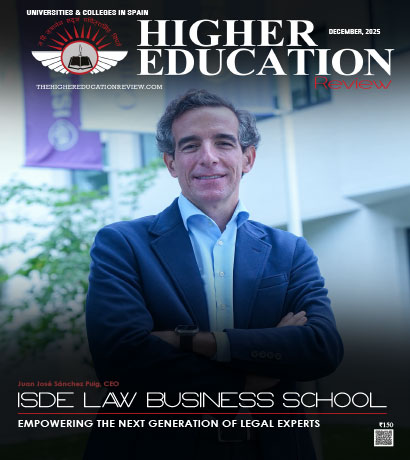Flipped Classroom: An alternative to Coaching Classes?

In a typical classroom session, the teacher is acutely aware that many students do not understand the day's lesson but does not have the time to meet with them individually during the 30-minute class period. The student cannot stop the teacher and ask her to repeat, elaborate, and clarify the doubts. The teacher gives the homework to be submitted the next day. With both the parents working, the child hardly gets guidance assistance from them to do the assignments and solve problems. The next day the teacher will collect and briefly review the homework assignment. If students have additional questions, there will not be much time to linger. The class cannot fall behind schedule. There is a lot of material to cover before the test at the end of the unit.
Are the schools ready to provide education for 21st century?
With the increasing expectations from the schools to develop 21st century skills in students, there is an urgent need for the schools to change their approach towards teaching and learning. Teachers complain that they are not able to 'finish the syllabus' within the school timings and they cannot earmark any of the time for life skills, ICT skills, career and communication skills. Educators have been working to break this lecture-centered instructional model by shifting the focus from the curriculum-pacing guide to student learning needs as the driver of instruction. They are increasingly turning to an alternative model of instruction called Flipped Learning in which digital technologies are used to shift direct instruction outside of the group learning space to the individual learning space, usually via videos.
Issues and problems in present teaching methods
While traditional teaching has been a tried-and-tested method, it also has some disadvantages. It lacks student focused learning as it is based on repetition and memorization of facts; lacks emphasis on critical thinking; lacks process oriented learning; average focused-gifted and below average are neglected; lacks interactivity-students are passive recipients; students lack guidance for writing assignments, solving problems, and as a last resort go to coaching classes.
Flipping and moving the lecture to the homework realm and saving application and one-on-one work for the classroom experience make the lecture model more productive. Implementing a flipped classroom enables more focused teaching and learning to take place in the classroom.
What is Flipped Classroom?
In simple words, it is school work at home and home work at school. Flipping the classroom refers to swapping classroom lecture time for hands-on practice time. Therefore, the lecture is done for homework usually via a video or audio file and the classroom time is spent clarifying and applying new knowledge gained.
In the Flipped Learning model, teachers record their lectures, demonstrations, narrations, etc., create videos of their teaching, or use web resources such as TED-Ed and Khan Academy; the videos are available for students to access at home, as many times as they like, enabling them to come to class better prepared. Once the students are prepared, teachers can devote more of classroom time for integrating and applying their knowledge through a variety of active learning strategies. Teachers also can use class time to check on students' understanding and help them in completing their assignments and provide individualized support.
Why are teachers flipping their class?
This approach saves the classroom time for discussion, clarifications and application of knowledge and puts the responsibility of information processing on the students. The teacher can fruitfully engage students during the class hours to write assignments, solve problems - the main reason for which the students go to coaching classes. Students learn more deeply: interacting meaningfully and often with their instructor and peers, and getting and giving frequent feedback, they acquire a deeper understanding of the content and how to use it.
Flipped Learning is different from online, blended, and distance learning. Online education, for example, occurs only remotely, and the teacher and student are never face-to-face (Oblinger & Oblinger, 2005). Virtual class meetings, assignments, and lectures happen online through a course management website usually, but not always, asynchronously. Sometimes the lectures and other activities are augmented by group chats or other means of facilitating collaboration and peer instruction.
From the teacher's perspective, flipped classroom is important as it enables increased classroom time to present content, discuss complex topics and work with students- either individually or in small groups. It also enables the teacher to use recorded lectures in multiple course sections- year over year, with easy tools to update content. The classroom time saved can also be used to develop in students the 21st century skills.
The use of videos or other digital technologies to deliver content outside of class does not guarantee that anything different will occur during class time. The onus is on the teachers to make the shift from teacher-driven instruction to student-centred learning.
Are the schools ready to provide education for 21st century?
With the increasing expectations from the schools to develop 21st century skills in students, there is an urgent need for the schools to change their approach towards teaching and learning. Teachers complain that they are not able to 'finish the syllabus' within the school timings and they cannot earmark any of the time for life skills, ICT skills, career and communication skills. Educators have been working to break this lecture-centered instructional model by shifting the focus from the curriculum-pacing guide to student learning needs as the driver of instruction. They are increasingly turning to an alternative model of instruction called Flipped Learning in which digital technologies are used to shift direct instruction outside of the group learning space to the individual learning space, usually via videos.
Issues and problems in present teaching methods
While traditional teaching has been a tried-and-tested method, it also has some disadvantages. It lacks student focused learning as it is based on repetition and memorization of facts; lacks emphasis on critical thinking; lacks process oriented learning; average focused-gifted and below average are neglected; lacks interactivity-students are passive recipients; students lack guidance for writing assignments, solving problems, and as a last resort go to coaching classes.
Flipping and moving the lecture to the homework realm and saving application and one-on-one work for the classroom experience make the lecture model more productive. Implementing a flipped classroom enables more focused teaching and learning to take place in the classroom.
What is Flipped Classroom?
In simple words, it is school work at home and home work at school. Flipping the classroom refers to swapping classroom lecture time for hands-on practice time. Therefore, the lecture is done for homework usually via a video or audio file and the classroom time is spent clarifying and applying new knowledge gained.
In the Flipped Learning model, teachers record their lectures, demonstrations, narrations, etc., create videos of their teaching, or use web resources such as TED-Ed and Khan Academy; the videos are available for students to access at home, as many times as they like, enabling them to come to class better prepared. Once the students are prepared, teachers can devote more of classroom time for integrating and applying their knowledge through a variety of active learning strategies. Teachers also can use class time to check on students' understanding and help them in completing their assignments and provide individualized support.
Why are teachers flipping their class?
This approach saves the classroom time for discussion, clarifications and application of knowledge and puts the responsibility of information processing on the students. The teacher can fruitfully engage students during the class hours to write assignments, solve problems - the main reason for which the students go to coaching classes. Students learn more deeply: interacting meaningfully and often with their instructor and peers, and getting and giving frequent feedback, they acquire a deeper understanding of the content and how to use it.
Flipped Learning is different from online, blended, and distance learning. Online education, for example, occurs only remotely, and the teacher and student are never face-to-face (Oblinger & Oblinger, 2005). Virtual class meetings, assignments, and lectures happen online through a course management website usually, but not always, asynchronously. Sometimes the lectures and other activities are augmented by group chats or other means of facilitating collaboration and peer instruction.
From the teacher's perspective, flipped classroom is important as it enables increased classroom time to present content, discuss complex topics and work with students- either individually or in small groups. It also enables the teacher to use recorded lectures in multiple course sections- year over year, with easy tools to update content. The classroom time saved can also be used to develop in students the 21st century skills.
The use of videos or other digital technologies to deliver content outside of class does not guarantee that anything different will occur during class time. The onus is on the teachers to make the shift from teacher-driven instruction to student-centred learning.

